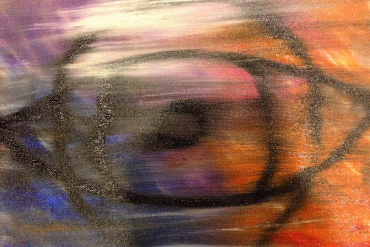Exceptional human beings take 100% responsibility for their suffering. They are never a victim. Sound radical?
It is.
This kind of radical responsibility is very rare but it makes the crucial difference in living a life of increasing joy. Suffering is actually good because, if we’re willing to learn from it, it ultimately points us toward accessing a part of us that never suffers. You may not even be aware that there is such a part within you. There is and we’ll explore it as a part of looking at suffering.
For now, learning starts with a better understanding of what suffering actually is and who creates it. Based on my own experience and a love for psychology, I’ll demonstrate why learning from suffering is one of the best ways to radically improve the quality of life in a relatively short period of time.
What do we mean by suffering?
Let’s start by acknowledging there are different types of suffering we can experience, from the gross to the subtle. On the gross level, the most obvious is physical suffering – the experience of pain generated by the body. Then there’s emotional suffering – sadness, depression, fear to name a few common ones. The subtlest and sometimes hardest to recognize or acknowledge is suffering from our point of view, negative thinking, mental patterns and perceptions.
We are going to focus on the last two forms. If you put some effort into this process, you may begin to notice that you are suffering in more ways than you realized – but this good! It’s only when we shine light on the obstacles in our way that we can move past them.
Let’s start with a mundane, everyday example of suffering to understand it more clearly:
It’s three weeks before Christmas. Sales in my store have been painfully slow. Before closing, a customer walks in dissatisfied and returning a $6,000 pair of earrings. When he walks in I’m on the phone with our Bank because fraudulent charges have appeared in large sums on our business debit card. My wife then texts me that she is stranded in traffic and cannot pick up our children from school aftercare…
It’s a typical, modern day recipe for stress and discomfort, right? Now let’s deconstruct the different levels of experience and the suffering inherent in this familiar scenario and gain some understanding and new context of what’s actually happening.
Different levels of experience and suffering
There are several levels of experience in what’s going on, and it’s crucial to distinguish between them because, especially when it comes to suffering, everything gets mushed together – facts, feelings, emotions, and thoughts. This is not necessarily a helpful thing. Deconstructing it will give us the perspective and distance to learn to do something new and different to turn suffering to our advantage and make it “good.” It’s like climbing to the top of a high tree when you’re lost in a dense forest to find your location and regain your sense of direction. The goal is to transmute our experience from one of discomfort to one of comfort.
Experience LEVEL 1: Facts
A) The client will most likely return the earrings, impacting our cash flow.
B) It will take at least 20 minutes (at some point) to resolve the Bank issues.
C) Someone will wind up being with my kids.
Experience LEVEL 2: Emotions (arising from associated thoughts)
FEAR of bouncing checks, running out of cash, going out of business…
ANGER at the client who waited until now to make take his return and at his wife for being too picky…
Anger with myself for having a customer friendly return policy…
ANNOYANCE with my wife’s text intruding on my situation
WORRY that my kids will feel abandoned and won’t be pick up in time.
DISAPPOINTMENT in myself for not protecting my debit card information, of being too close to the edge with my cash position…
FRUSTRATED that it’s so easy to commit bank fraud in this country.
Notice, these are just the primary emotions involved but there may be many more in addition to these. The point is they all contribute to a general feeling of stress, pressure, discomfort and tension.
Years of clinical research has proven that these types of emotions frequently manifest in the physical body as muscle tension, headaches, high-blood pressure, increased heart rate and shallow breathing. We are now ill-at-ease and suffering on many levels.
Experience LEVEL 3: I call this level “collateral damage” or incidental suffering beyond my own
My customer may experience me being less than perfect in welcoming him. He might walk away annoyed or dissatisfied. My wife feels guilty and worried now that I can’t help. The Bank representative has to field a my annoyed, worried call…
Follow this exercise to break down the stress and suffering
Your turn. This is an interactive article so you’ll need to find your own similar set of circumstances to help you relate to this example of suffering. Take this moment now to recall a specific moment or circumstances (similar) where you recently “suffered.” Close your eyes, if it helps and do it now because it will really help you understand the mechanics of your own suffering.
Got it? Well done. Using your example of suffering,
1) Like me, identify the actual facts
2) Now see what are the predominate thoughts you identify in response to the facts. And, in turn, what are the emotions these thoughts bring on?
3) Finally, take a peek at the collateral damage. Are there consequences for others – innocent bystanders? What a mess right?
Now notice: your actual suffering doesn’t begin until your experience goes below (or beyond) Level 1, the facts of the situation. That’s because, let’s face it, if it were just the facts alone, there wouldn’t be a “problem” at all. No reason to be “upset.” The facts themselves don’t cause suffering. Facts are just what is so – what is occurring right now before you. They are simply the events, the things, the words that an uninvolved video camera would be recording.
It’s our interpretation of the fact(s), of what’s occurring in the present moment, and the emotions arising within us as a result that causes our suffering. Is that clear? It’s our almost automatic discomfort with what is happening inside us and our reaction to what is happening that becomes the “problem” and leads to forms of suffering. As Eckhardt Tolle writes about in the Power of Now, it’s everything we attach to what occurs in the present moment that has the potential to be a problem and “upset” us.
So what’s really going on? Let’s continue by looking at Level 2, the emotions. Where do the emotions come from? Mainly reactions to the mind, from the thoughts that arise in response to what is happening – the facts. With suffering, the thoughts are usually fearful, negative, judging, critical, and portending future troubles or more negativity. They also come from memories of being in similar situations and the mind not being able to tell the two apart. In other words, attaching the present to the past! Ouch.
Our job is to sever this attachment (or connection) as soon as it’s possible for us.
Let’s examine the association of thoughts and emotions
You might wonder, but how are these thoughts suffering? Well the negative thoughts themselves, by themselves, are kind of like facts, they’re just negative thoughts IF we are able to simply “notice” them as objects of our awareness. But it’s not that easy is it? No. And the reason is because the negative thoughts more or less instantaneously bring on the experience of negative emotions – not pleasant ones. They don’t FEEL good. These emotions engender general discomfort. So there we are, being propelled by our response to the facts and diving into a toxic soup of negative thoughts and emotions living for a time INSIDE us. Familiar? Yep. Not much fun either.
So now that we deconstructed our suffering, what’s the answer? How do we make suffering “good?” How do we find comfort in the midst of this discomfort soup we’ve cooked up inside ourselves?
Well we start with the very act of acknowledging we are suffering in the first place, and that we want to feel better NOW. We have to become AWARE of the suffering – that it exists.
Amazingly, many of us never even get to this point because it’s so familiar, we’ve grown up with this kind of suffering and, like a fish, it’s the water we’ve always swam around in. Many of us live with subtle levels of chronic suffering and don’t even know it. It’s just how life is. Low grade worry, irritability, anxiety, unease, anger… a huge step is noticing the many ways we are actually uncomfortable or suffering in the first place. Once we truly take notice, and this is the key to the practice, we can learn to shift our awareness away from it, the suffering and discomfort, and towards something comforting or comfortable or maybe just better than the suffering.
Most of us have spent our lives developing various ways and habits to cope or feel better about ourselves or what we’re experiencing. We have learned how to “self-medicate” with alcohol, food, drugs, and sex. We’ve learned how to compensate by using extreme behaviors. We’ve learned how to deny our bad feelings by blaming others, flying into rages, and on and on. This time, however, we are not going to turn in those directions. This time we’re going IN for relief, not OUT.
Instead we’re going to FIND a place within ourselves to go to for comfort that is beyond thoughts, emotions and physical sensations. This place is so simple, so utterly familiar and immediate, that you’ll be probably be shocked that you’ve had it at your fingertips all along.
Where is it?
The power of awareness
First, remember you can MOVE your awareness inside yourself or outside yourself anytime you like, right? For example, you can focus your attention (awareness) on your body – the inner sensation of pressure on your butt, if you’re sitting down, or the sensation of your feet as they contact the ground while you’re standing. Or you can place your attention on your hands – the subtle pulsation in your fingers as the blood courses through them.
You can move your attention to any one of the outer sense perceptions: what you are hearing, or seeing, or smelling. All of these can become objects of your awareness. You can even move from one to another – try it now. Shift your awareness around, flitting from one object to another, both inside yourself and out: your body, your hearing, your thoughts, your sense of smell. Jump your awareness around.
Now try something a little more challenging: (read this through first, then do it)
Sitting there, wherever you are, close your eyes and just be aware of your breathing. If you like, you can start by noticing the coolness in your nose as you breathe in and the warmth as you breathe out, or the movement of your rising and falling chest or abdomen. As you do, focus on the simple rhythm of the breath as it comes in and goes out. No need to change it – just observe it with your awareness.
See if you can keep this up for 30 seconds or even one minute. This is meditation. This is mindfulness. You are concentrating your awareness to a point within – in this case your breathing. If your awareness is drawn away by a thought(s) or other things outside yourself, keep bringing your attention back to your breath. After a minute, notice any effect it has on you.
If you’re feeling adventurous, try just focusing on the felt experience of being here now – wherever you are. You exist, right there, in this moment. Not your thoughts, or your emotions, or even your breathing or bodily sensations, just the pure, simple, experience of being present right now… and now… and now…keep coming back to just being there.
Sitting there with your own self. Nothing to do, nothing to fix or change or add to. Just BE. The practice is to continually let go of where your attention wants to get caught or stuck – thoughts, body sensations, irritation, confusion… and come back to being. Just being there. You might even find yourself relaxing a bit. Feeling more comfort and less discomfort.
Now the key here is you have to DO IT. It’s not enough to read about it. There’s a saying: Meditation teaches Meditation.
If you practice this simple process of turning your awareness within you can begin to get in touch with the pure awareness of being – the simple “I am” that is always with you. What you might find, as you explore this experience of yourself, is that this place within your own self, this being, has a quality of stillness, of tranquility, of fullness and even peace. Over time, as you explore this inner landscape, you learn to access this place more and more and it opens up, becoming more available to you. It’s like spending time with a good friend – you get to know them better each time – only it’s you you’re getting to know.
Your challenge for next time
Today, the very next time you find yourself suffering or uncomfortable, or “upset,” make an effort to pause, close your eyes, and SHIFT your attention within yourself – away from the negative thoughts, emotions, bodily sensations, and give focused attention to your breath and let it lead you to the simple comfort of being here.
Both the breath and the felt experience of being are always in the present moment. There is comfort there. Stay there as long as you can. Stay with the simple well-being of this inner experience until you feel you’ve shifted your state (a lot or a little). You might find that the outcome of what follows (what we call the “future”) is a little bit different because you’ve done this, you’ve made the effort to center yourself from within.
Congratulations, now you’ve turned your suffering to your advantage and found comfort inside your discomfort!
If you need more help in making this process part of your daily awareness in business, please reach out to the BoomingCollective where entrepreneurs meet others who seek alignment with their purpose and business.





